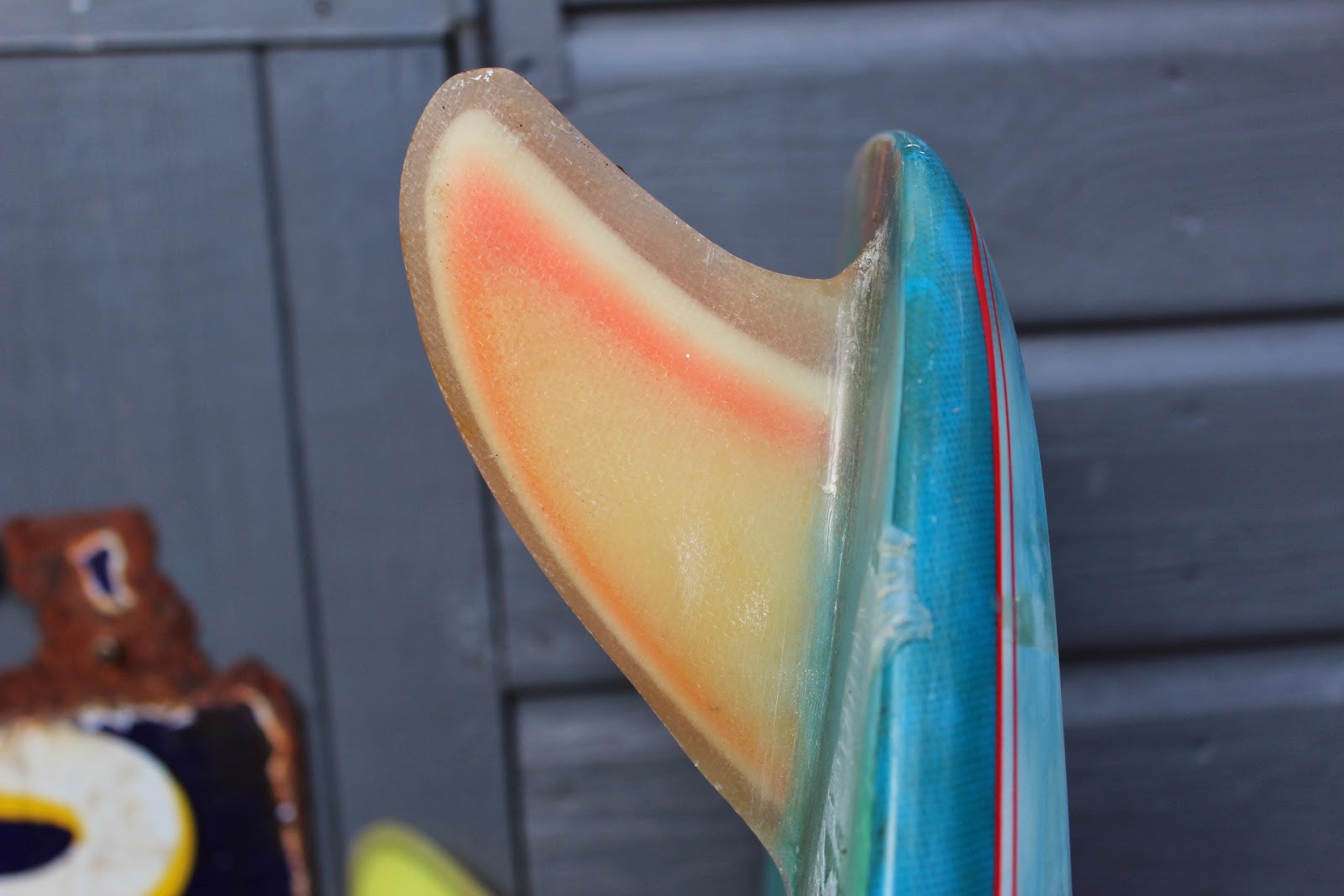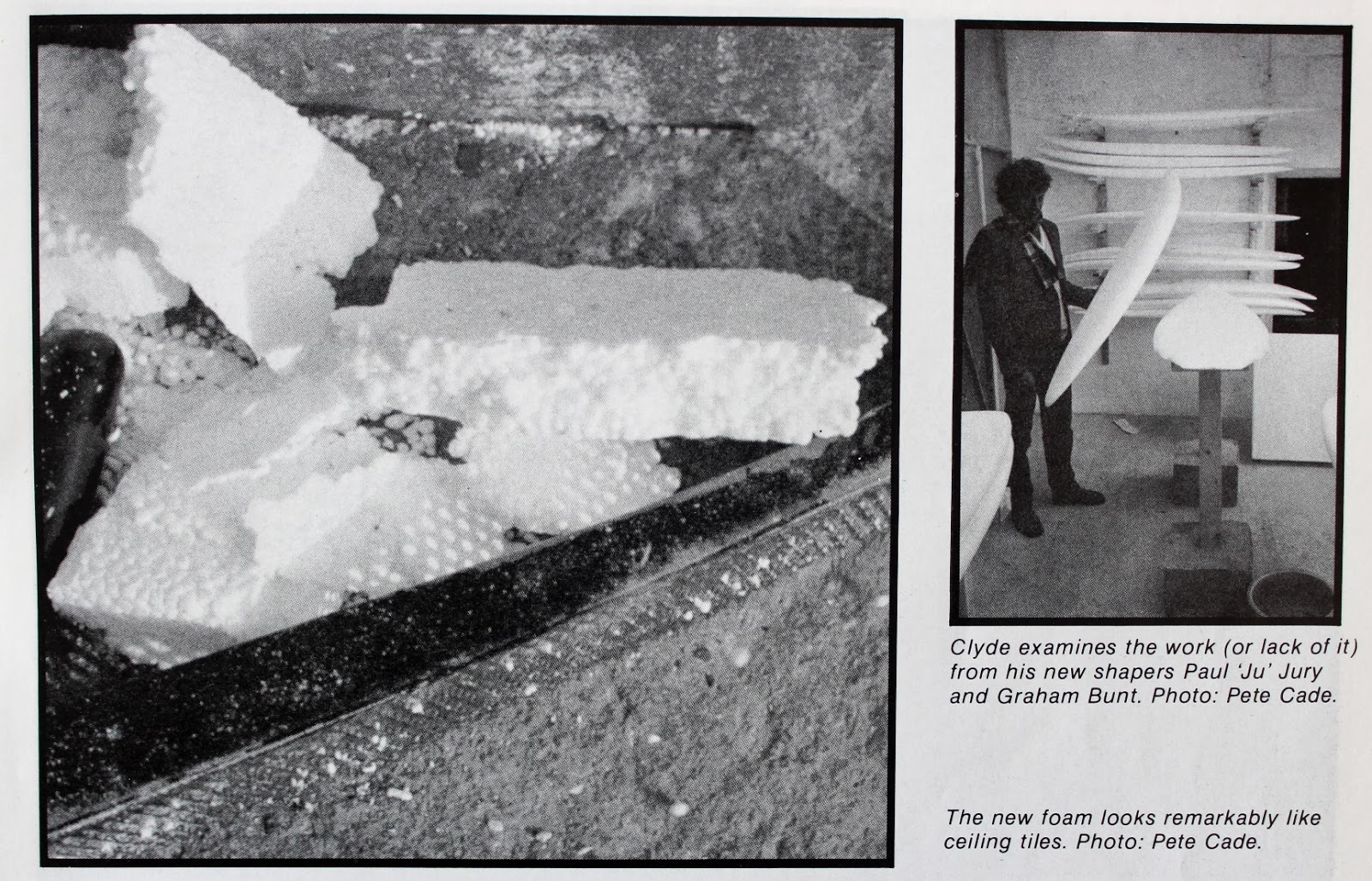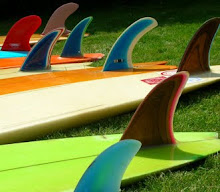You would think that a work of art like this that has had countless hours put in to its creation would be looked after and treasured !? But unfortunately not , its had some really poor repairs and has had deck plugs put in for tow board loops. The fact its an early epoxy board makes it harder to repair well, and the years have taken their toll.
Back when it was new around 1984 this was a wonder board, a revolution, and Lightwave were the first company making surfboards out of epoxy in the world (borrowed from the boatbuilding industry) . It was sold as much stronger yet much lighter than other boards of the time. But rather than taking over the market, these epoxy boards died a death by the late 80s (a few decades later epoxy would again hit the market ).
Clyde was a top Californian surfer and shaper , who surprisingly moved to sleepy north Cornwall in the early 80s. He'd been over here competing in the Newquay pro-am and had enjoyed the laid back vibe and friendliness of Cornwall - a world away from his crowded home of LA . He saw a business opportunity and joined forces with local John Bamford to set up Lightwave surfboards and windsurfers at Boscastle.
They designed a new foam, which resembled polystyrene and was much lighter than standard blanks ; so they could use the weight saving to make the outer shell much more durable. Epoxy resins did the job, which were pretty bombproof and didn't pressure dent. The new foam also didn't suck up water so any dings that happened wouldn't bog the board down so badly.
When you read all this its surprising they weren't a big success.
1983




















.jpg)





hi, i owned a lightwave board in the middle eighties ,i am sure they were situated where escape boards are today , i remember going there to buy some epoxy to do some repairs ,
ReplyDeletei still have a lightwave board at the moment but it is a epoxy over standard pu foam ,
as a point of interest one of burt burgers team riders brought back a couple of clyde beatys epoxy boards from america to aus in the eighties and they impressed burt that much with their light weight and strength that it set him on the alternative construction path that eventually became firewire surfboards today ,
thanks for this info Pete. In many ways lightwave were well ahead of their time
ReplyDeleteHi.I grew up with Johnny s brother Ben..who moved to the B.V.I and shaped a few boards for us lads.Meet Johnny too..classic
ReplyDelete